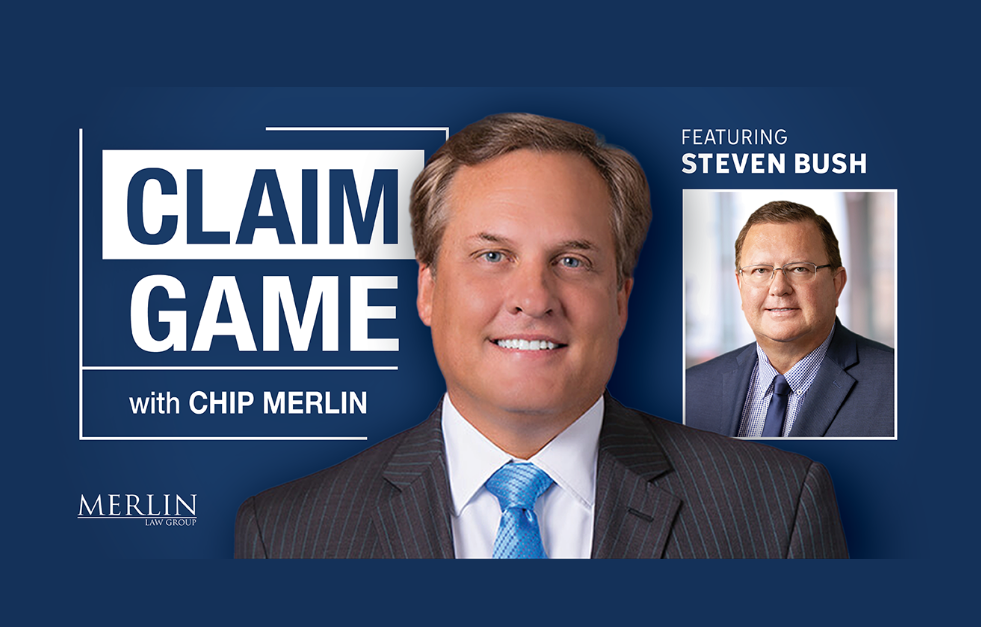A recent federal circuit of appeals decision1 is important to understand the current rules for interpreting an insurance contract in Florida. It started out with a very irreverent tone about insurance law:
This is an insurance case. Fear not, keep reading. In determining whether a pair of insurance policies cover losses resulting from ‘named windstorms,’ we have to decide an important and (as it turns out) interesting question about the interpretation of written legal instruments: What is a court to do when all the surest proof of contracting parties’ subjective intentions and expectations flatly contradicts the surest indicators of an agreement’s objective legal meaning?
At the risk of oversimplifying, Aspen Specialty Insurance Company, a billion-dollar insurance conglomerate, has essentially all of the subjective-intent evidence on its side: The records of the contracting parties’ course of dealing, contractual negotiations, and policy applications strongly suggest that the parties intended and expected that the policies would exclude damage caused by named windstorms. But Aspen’s policyholder—Shiloh Christian Center, a small Florida church—has the text: However clear the parties’ subjective intentions or expectations, the policies do not, by their plain terms, exclude named-windstorm-related losses.
What, then? The district court found the evidence of the parties’ subjective intent overwhelming and accordingly granted summary judgment to Aspen. We hold, to the contrary, that, under Florida law—as in the law more generally—in the event of a conflict between clear text, on the one hand, and even compelling evidence of extra-textual ‘intent,’ on the other, the latter must give way to the former……We therefore reverse the district court’s decision and remand for further proceedings.
The court ruled that policy language controls. This is important because the facts seemed to strongly indicate that the parties contracted for a policy with no windstorm coverage. The facts were recited in part as follows:
In 2016 and 2017, respectively, Hurricanes Matthew and Irma tore through Melbourne, Florida, pummeling Shiloh Christian Center. On both occasions, the storms peeled back the church’s roof, allowing rain to soak the exposed structure.
In 2015, the year before Matthew hit, Shiloh’s property insurance policy with Aspen Specialty Insurance Company covered losses resulting from so-called named windstorms—i.e., hurricanes. In the middle of that year, though, Shiloh specifically asked Aspen to stop covering named-windstorm-related losses. Aspen agreed and issued an endorsement implementing the requested change: ‘THIS ENDORSEMENT CHANGES THE POLICY. PLEASE READ IT CAREFULLY. . . . It is understood and agreed effective 7/16/2015, the following change is made to this policy: Named Windstorm coverage is removed from this policy.’ Reflecting the amendment, Aspen reduced Shiloh’s premium and even refunded its past payments for named-windstorm coverage.
In early 2016, Shiloh began negotiations to renew its policy with Aspen. An insurance broker gave Shiloh a quote for ‘the same coverage provided after the Return Premium endorsement was issued last year’—that is, the post-amendment coverage that ‘exclude[d] Named Storms.’ In its application for the policy, Shiloh scribbled ‘EX wind’ in the section labeled ‘forms and conditions to apply’ for several of the covered premises. Aspen then issued a binder— which, for the uninitiated, is ‘a contract . . . for interim insurance’ that is ‘effective at the date of the application and terminates at either the completion or rejection of the principal policy.’…The binder described the agreed-to scope of coverage this way: ‘All Risks of Direct Physical Loss or Damage excluding Flood, Earthquake and Named Windstorm.’
Soon after, Aspen issued the 2016 policy. The cover page described the 2016 policy as a ‘renewal of’ its 2015 predecessor. But the two policies’ terms differed in material respects. For one thing, the 2016 policy was about $10,000 cheaper per year than the amended 2015 policy. Far more significantly here, the 2016 policy contained no exclusion for losses caused by named windstorms.….
Aspen underwriting simply failed because it sent a policy without the windstorm exclusion. Most of the time, no loss occurs, and the big mistake is of no significance. Not this time, as the court noted:
You know what happened next. In October 2016, a named windstorm—Hurricane Matthew—blew through Melbourne, ripping the roof off Shiloh’s building. Rainwater poured in, aggravating the damage. Shiloh filed a claim for, in its words, ‘Water Damage from Roof hurricane Matthew.’ Aspen denied the claim on several grounds, including, as relevant here, that Shiloh’s policy excluded coverage for losses caused by named windstorms.
The following year was basically a carbon copy. In early 2017, Shiloh commenced efforts to renew its policy. As in 2016, Aspen provided a quote, reminding Shiloh that the policy would exclude coverage for damage resulting from ‘Named Wind- storms.’ As in 2016, Shiloh applied for the policy, scribbling ‘EX wind’ into the application’s ‘forms and conditions to apply’ sections for certain buildings, and Aspen issued a binder reflecting the named-windstorm exclusion, As in 2016, Aspen then formally issued a policy that described itself as a ‘renewal’ of the 2016 policy, but, again, whose ‘Exclusions’ provision, while expressly carving out losses resulting from all manner of contingencies, said nothing about named windstorms.
Like clockwork, in September 2017, a named windstorm— Hurricane Irma—blew through town and, you guessed it, tore the roof off of Shiloh’s building. Just as it had in Hurricane Matthew, water poured in, exacerbating the damage. Shiloh filed another claim listing the ‘cause of loss’—again, in its words—as ‘Hurricane Irma.’ And just as it had done a year earlier, Aspen denied Shiloh’s claim on several grounds, among them that its policy excluded losses caused by named windstorms.
Aspen failed to provide a policy with a proper windstorm exclusion twice, and two separate windstorms damaged the policyholder’s structure.
How do Florida courts interpret insurance policies with these unique facts? This case is important because it overruled the district court judge who allowed evidence of policy intent to be considered. I will leave out case citations so the rules read easier:
The general rules governing the interpretation of insurance policies under Florida law are clear. The cardinal principle is that a policy’s text is paramount: ‘Florida courts start with ‘the plain language of the policy, as bargained for by the parties.’…In particular, ‘[i]n insurance coverage cases under Florida law, courts look at the insurance policy as a whole and give every provision its full meaning and operative effect.’ To be sure, Florida law permits reviewing courts to venture outside the policy’s four corners in limited circumstances—to consider, for instance, whether an insured’s ‘application’ should be understood to ‘amplif[y], extend[], or modif[y]’ the policy. Fla. Stat. § 627.419(1). Florida law is clear, though, that in the event of a conflict between the policy and the underlying application, the policy controls….(‘[T]he general rule’ is that ‘the provisions of the policy [] govern where conflict exists between the provisions of the application and the policy.’)
Beyond those basics, Florida law prescribes more particular rules for the interpretation of ambiguous and unambiguous insurance policies. The rule applicable to unambiguous policies is ruthlessly straightforward: If the policy’s ‘language is unambiguous, it governs’—end of story….(‘Where the language in an insurance contract is plain and unambiguous, a court must interpret the policy in accordance with the plain meaning so as to give effect to the policy as written.’). Importantly, that is true even where extrinsic evidence contradicts the policy’s terms….(‘It is well established under Florida law that parol evidence is inadmissible to vary or contradict the clear and unambiguous language of a contract.’). And it is ‘especially true when the contract contains an integration clause indicating that the parties intended the written agreement to be the entire agreement.’…
When confronted with an insurance policy that is facially ambiguous, Florida courts apply the familiar contra proferentem canon. Pursuant to that interpretive rule, ‘any ambiguity which remains after reading each policy as a whole and endeavoring to give every provision its full meaning and operative effect must be liberally construed in favor of coverage and strictly against the insurer.’…
Importantly here, the Florida Supreme Court has clarified that facial ambiguities in insurance contracts should be resolved by reference to contra proferentem rather than extrinsic evidence of the parties’ supposed ‘intent.’ And in fact, it did so in response to a question that we certified to it. In Ruderman ex rel. Schwartz v. Washington National Insurance Corp., 671 F.3d 1208 (11th Cir. 2012), we confronted (1) a Florida insurance policy that was ambiguous on its face and (2) an apparent split among Florida courts about how to resolve the ambiguity. One line of decisions indicated that ‘[a]mbiguous policy provisions are interpreted liberally in favor of the insured and strictly against the drafter who prepared the policy’; but another suggested that courts should ‘look to extrinsic evidence to resolve the ambiguity before construing any remaining ambiguity against the drafter of the policy.’ Uncertain how to proceed, we certified several questions to the Florida Supreme Court, one of which was whether, ‘[i]f an ambiguity exists in this insurance policy,’ a court should ‘first attempt to resolve the ambiguity by examining available extrinsic evidence.’ In what we called a ‘definite response[],’ the Florida Supreme Court ‘advised us that the answer’ is ‘no’—contra proferentem controls…..
The bottom line is that the policy language controls in Florida. Insurers should state exclusions clearly if they want to avoid coverage. In this case, the policy was clear because neither issued policy had a windstorm exclusion.
I went back to the district court case to see if the insurer tried to make a cause of action for reformation of the policy. None was made. I do not want to comment on what may have happened because more evidence was not developed.
If you enjoyed reading today’s blog, you will love reading Bill Wilson’s book, which we discussed in When Words Collide: Policy Interpretation Doctrines and the 10 Commandments. Understand your Insurance Policy Better—RTFP!
Thought For The Day
A lot of us grow up and we grow out of the literal interpretation that we get when we’re children, but we bear the scars all our life. Whether they’re scars of beauty or scars of ugliness, it’s pretty much in the eye of the beholder.
—Stephen King
1 Shiloh Christian Center v. Aspen Specialty Ins. Co., No 22-11776 (11th Cir. Apr. 13, 2023).




